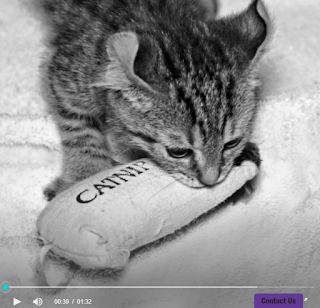Introducing a New Pet to Your Home
If you’re thinking about adding a new pet to your family, or if you have a foster or friend’s pet visiting for a while, there are ways to make the introductions and transitions smoother for all. All animals respond to new animals and certain triggers differently, so please remember this is only a guide. What works for one pet might not work for another, so if you have a multi-pet household, you might need to take it slow and introduce each pair separately in a different way.
First, what to avoid. Simply bringing a new animal into your house with no warning for the existing pets – or sticking two stranger dogs in the backyard together – is usually asking for trouble. Being suddenly thrust into an unfamiliar situation often makes the new pet and the existing ones overwhelmed and feel they have something to defend or flee from because the expectations haven’t been laid out for them. Also, dogs who are spayed or neutered are usually going to have an easier time acclimating to each other than those who aren’t.
Start off on neutral ground if possible.
A great way to introduce new dogs to each other is by having two people walk them separately, but a few feet away from each other, on neutral territory so they can get used to each other while they have a task (the walk) at-hand. When you can tell they’re relaxed and calm about the situation, you can gradually decrease the distance between them until they are sniffing and checking each other out, and then ideally they can finish the walk together. Keep an eye on their body language signals – stiffened bodies, yawning, and either avoiding any eye contact or staring down are all signs that you need to pull away and try again once things are calm before they have the chance to turn hostile. You must also stay calm yourself; if either walker feels nervous, that energy is going to travel right down the leash to the dog and make him nervous too.
Give the new pet a small space to get adjusted to first.
Sometimes a walk just isn’t possible right away, like if you pick up a stray off the street and don’t exactly have the chance to get him fitted for proper walking gear or even know how he will act on a leash. After all, some dogs are naturally more leash-aggressive but will do perfectly well interacting with another dog off-leash. So other potential options are crating the new dog while the other pets sniff through the bars or putting him in a bathroom for a short time if he doesn’t seem to panic from the closed door. New dogs sometimes feel more secure this way, and it protects anyone from getting hurt.
Many new cats will prefer to be kept in one room for a while as they acclimate to all the smells and sounds of their new environment before they even want to venture out and explore and meet anyone. This also gives all the pets a chance to sniff each other out under the doorway without anyone getting too upset.
Above all, be patient, and put yourself in your pets’ place.
It is your responsibility to set them up for success, not theirs. Sometimes adding a new pet to your household is a welcome breeze for your current pets (“yay, I have a playmate!”)…but sometimes they might feel jealous or upset, and there might even be a complete shift in the pack dynamic based on each dog’s personality. Sometimes when a beloved dog dies and the family adopts another one, they’ll find their first dog’s personality in the hierarchy changes altogether. This is a natural response but one they should be allowed to work out gradually and safely. You’ll want to allow for a lot of separation, even in close proximity, until you know you can trust everyone’s behavior will be safe and calm. Make sure to give all your pets lots of praise and treats for healthy interactions, and never punish them for negative behaviors or yell; you want them to associate being around each other with only positive things. For example, if your dog starts chasing your cat, distract him with a treat – this won’t cause him to chase your cat to get a treat; it will teach him to come when you call and get distracted from the cat until she’s no longer such a novelty.
Most of the time, animals just need time to get used to their new family arrangement and will become friends (or, at the very least, tolerant) with lots of time and positive reinforcement. We wish you all the best with your new family member or visitor!
If you have more questions about specific issues, please contact us today; we can refer you to someone who has behavior and basic training certification if you need more help to ensure a successful introduction!




Comments
Post a Comment